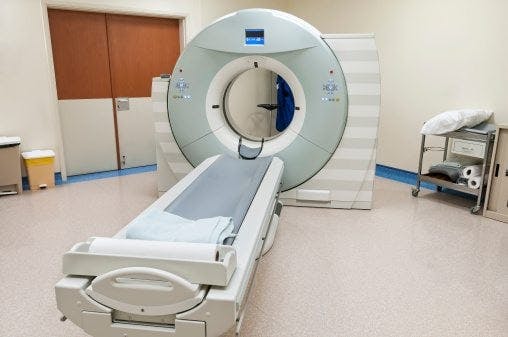Computerized tomography (CT) scans help your doctor view internal processes and detect injuries within the body. A CT scan combines a series of X-ray images taken from various angles, using computer processing to generate cross-sectional images of bones, blood vessels and soft tissues within the body.
Reasons for a CT Scan
- To diagnose disorders of the muscles or bone, including tumors or fractures
- To find the exact location of a tumor, infection or blood clot
- To guide procedures like surgery, biopsy and radiation therapy
- To detect and monitor conditions like cancer, heart disease, lung nodules and liver masses
- To monitor the effectiveness of certain kinds of treatments
- To identify internal injuries or internal bleeding
What to Expect
A CT scan can be performed either in a hospital or in an outpatient facility. The scans are painless, and the entire procedure takes under 30 minutes in most cases. During the scan, the steps will be as follows:
- You may first be asked to remove your clothing and wear a medical gown, as well as remove any items with metal on them like jewelry or eyeglasses. In some cases, you may need to be given a contrast material through injection, enema or orally to highlight certain areas of the body.
- You lie on a narrow, motorized table that slides you through the opening in the scanner’s tunnel (the scanner is shaped like a donut standing on its side). Straps and pillows might be used to help you stay in position, or a head cradle might be used to hold your head still.
- As you’re moved into the scanner, detectors and the X-ray tube rotate around you. Each rotation creates images of thin slices of the part of your body being scanned. You might be able to hear buzzing, clicking and whirring sounds.
- You can communicate with a technologist in a separate room via intercom, and this technologist can also see you. They may ask you to hold your breath at certain points.
There is no down time after a CT scan—you can return to normal activity right away. You might receive special instructions if you received a contrast material, and you may be asked to wait a few minutes before leaving to ensure that you feel okay. You’ll be told to drink lots of fluids to help the kidneys remove contrast materials.
Risks and Results
There are a few limited risks of CT scans:
- Radiation exposure: CT scans briefly expose you to ionizing radiation—a greater amount than you’d receive during a regular X-ray. These tests have not been shown to cause long-term damage, though there is the potential for a small increase in risk of cancer. Because doctors use the lowest doses of radiation possible and the technology requires a very low amount, the benefits of these scans far outweigh this risk.
- Harm to unborn babies: If you are pregnant, your doctor may recommend an alternative type of exam, like an MRI or ultrasound, to avoid exposing the baby to radiation.
- Negative reaction to contrast material: It’s possible, though rare, that contrast material injected through a vein in the arm might cause medical issues or allergic reactions. These reactions, if present, are usually mild, but in rare cases can be serious or life-threatening. If you’ve had a reaction to contrast material in the past, tell your doctor beforehand.
If you’re in need of a CT scan, your doctor will give you recommendations for preparation and answer any questions you may have.
Revere Health Imaging offers the most advanced imaging technology in Utah Valley with convenient locations and reduced-cost exams. We even offer our imaging services at night for your convenience. Contact us today at 801-812-4624 for an appointment!
Sources:
“CT scan.” The Mayo Clinic. http://www.mayoclinic.org/tests-procedures/ct-scan/basics/definition/prc-20014610
“CT Scan (CAT Scan, Computerized Axial Tomography).” EMedicineHealth. http://www.emedicinehealth.com/ct_scan/article_em.htm






